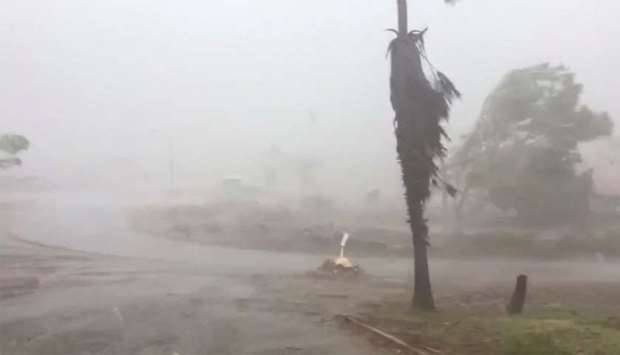Torrential rain pummelled parts of eastern Australia on Sunday for the fourth day, while severe tropical cyclone Damien has weakened in the country's north-west.
New South Wales saw heavy rain, damaging winds, abnormally high tides, damaging surf and severe flash and river floods in many parts of the state, the Bureau of Meteorology said Sunday.
Bush fires have wreaked havoc in New South Wales since September. The state had also suffered severe drought for the past two years.
‘It's wet out there!’ the weather bureau said on Twitter, adding the heaviest rainfall was in Linden in western Sydney, which saw 112 millimetres of rain in the five hours to 2 pm (0300 GMT) Sunday.
The mid-north coast received 250 mm of rain in 24 hours, while 150 mm fell across the Blue Mountains and Central Coast region.
The weather bureau said large sea waves with the largest recorded height of almost 14 metres were occurring off Sydney. Flash flood warnings were issued for more than a dozen places.
At least 80,000 homes are without power due to the severe storms, according to two utility companies - Ausgrid and Endeavour Energy.
Some roads have been swept away in floods, Australian broadcaster ABC said, while part of the major Great Western Highway was closed for several hours due to a fallen tree.
The State Emergency Service has responded to more than 3,300 requests for assistance since Wednesday when the rains started, Commissioner Carlene York told reporters in Sydney on Sunday.
One family in a car isolated by floodwaters was rescued by the Rural Fire Service helicopter, she said.
The heavy rainfall has helped firefighters by dousing bush fires that have been raging for months, including the Currowan Fire in the Shoalhaven after which burned 499,621 hectares and destroyed 312 homes.
On Sunday evening, there were still 38 bush fires burning in NSW.
Meanwhile, Cyclone Damien, which hit Western Australia's northern coastal Dampier-Karathha region on Saturday evening as a category three storm, weakened to category one as it moved inland.
The cyclone had brought ‘very heavy rainfall’ and destructive gale-force winds with gusts of 205 kilometres per hour.
It is expected to weaken below cyclone intensity later Sunday, the bureau said, adding Damien is the most significant cyclone to impact the region since 1989.
Heavy rain, in excess of 200 millimetres on Monday and Tuesday is likely, the weather bureau warned, adding it could also cause flooding in the Pilbara and Gascoyne mining regions.

